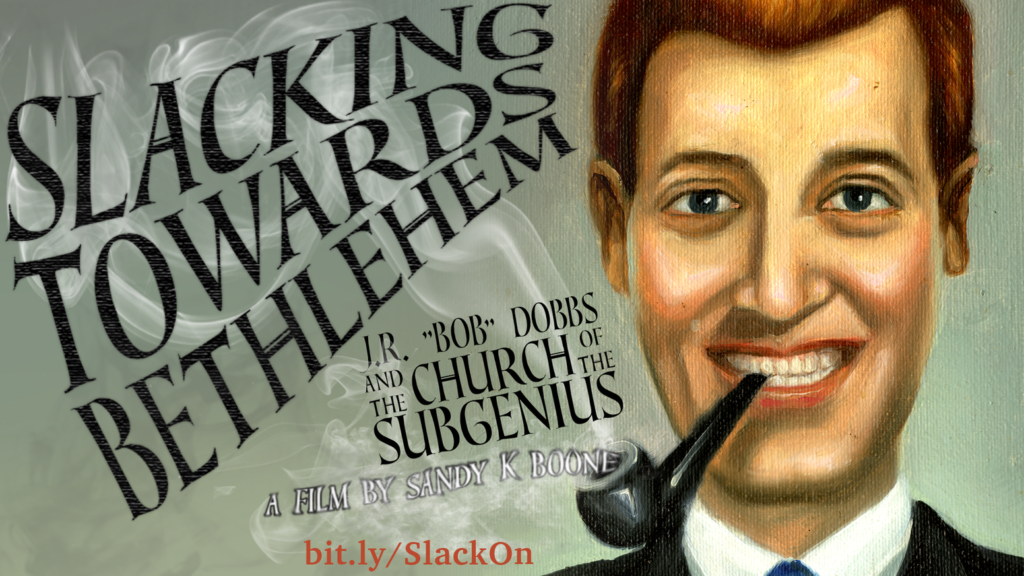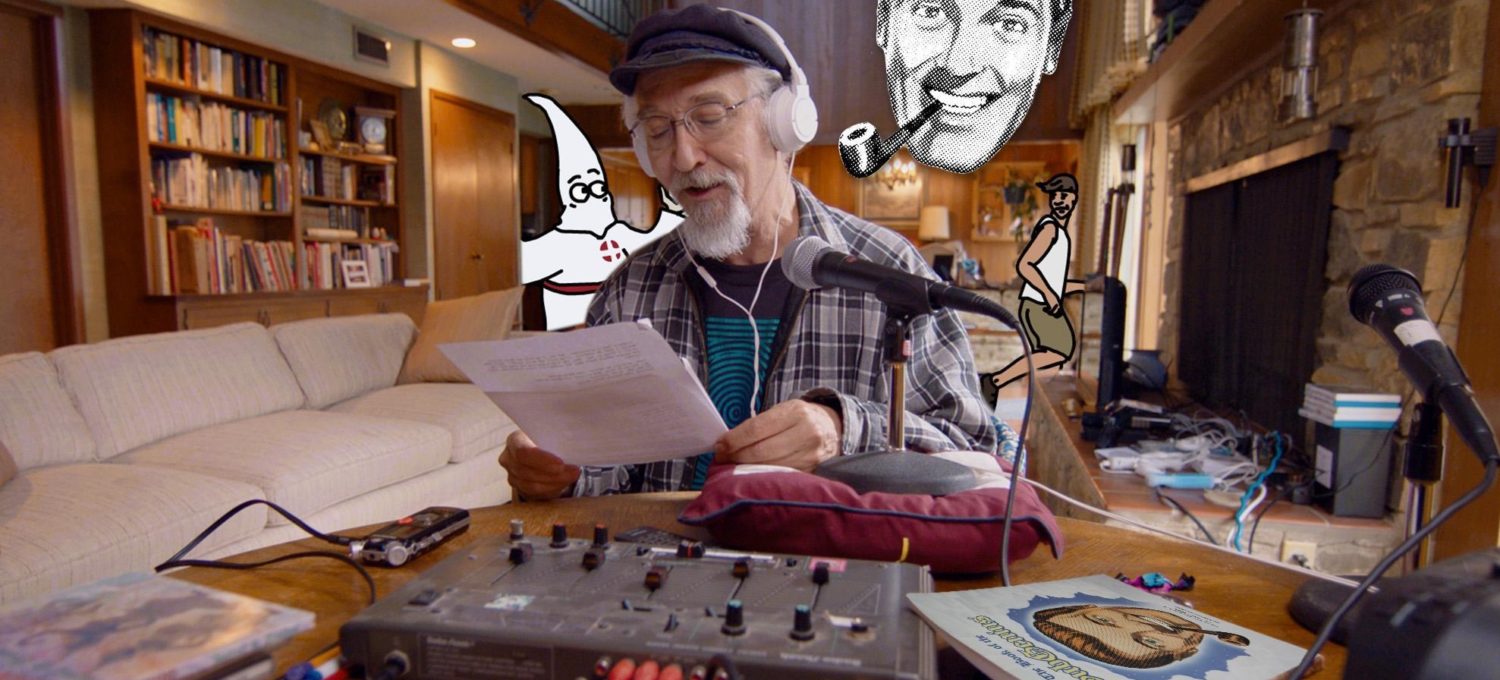Count on the SXSW Film Festival to showcase a perfectly chaotic documentary like J.R. “Bob” Dobbs and the Church of the Subgenius. It seamlessly works on three levels as a witty “Intro to Religion” text, a study of a little-known religious movement in the US, and an exploration into the parts of our individual and national psyche that are drawn to religious movements, whether they come in traditional forms or kookier versions like we see in the film. It’s a remarkable doc that, due to the “commons” who rule distribution, will likely be difficult for a wide audience to enjoy any time soon.
Finding themselves on the margins of conservative Ft. Worth, TX, friends Douglass St. Clair Smith and Steve Wilcox decided to start their own religion, taking the new names of Rev. Ivan Stang and Dr. Philo Drummond. Their prophet, whose image they took from public domain clip art, was J. R. “Bob” Dobbs. Inspiration for their scheme was all around them from the growing influence of televangelists to sensational cult leaders. Rev. Stang admitted, “If Jim Jones could convince 900 people to kill themselves, we could convince 900 people to send us a dollar.” Their movement gained enough traction that major publishing houses took note, and one eventually published their tracts and shelved them in the religious section of bookstores. The Church of the Subgenius would go on to count among its devotees, to one degree or another, the likes of Richard Linklater, Penn Jilette, Matt Groening, David Byrne, Paul Rubens, and Nick Offerman.

The Church of the Subgenius was mashup before the term was coined. Its aesthetic drew from a hodgepodge of public domain clip art and was inspired by tracts like Chick Publications. The church’s earliest leaders embraced technology from the start. As Rev. Ivan Stang says, “The Internet hadn’t been invented, but CB radio had.” At its best, The Church of the Subgenius did (does) what ever good religion should do, giving a voice to the voiceless and a sense of belonging to those who feel lost or disconnected. It did this by humorously creating a very clear “us vs. them” (members of the church vs. the “normals”), a core principle of many successful religious movements. As Eric Hoffer wrote, “a movement can survive without a god, but it can’t survive without a devil.” While the beliefs in what church members were against may have been crystal clear, what they were for was far more personal and nebulous. Their leaders summed it up this way: “Must have SLACK!” I guess it’s something akin to “Believe and Chill.”
But like all religions before it, The Church of the Subgenius would eventually experience conflict and division, largely through personality differences. As time marched on and their hoped for date of the end of the world on July 5, 1998, passed, they were faced with the hyper-mediated horrors of Columbine and 9/11, among others. Suddenly, their humorous criticism of the broader culture didn’t seem so funny. Through these conflicts and divisions, the documentary asks of the church’s founders, “What happens when you lose control of the religion you create?”
When technology, primarily the Internet, finally catches up with The Church of the Subgenius, a new possibility for revival emerges. Its leaders are now able to get their message out to a wider audience and locate like-minded individuals. However, it has also empowered the masses, which brings us to perhaps the most unsettling aspect of the documentary. Another central tenet of The Church of the Subgenius: “F^&* ‘em if they can’t take a joke.” Rev. Stang and Dr. Philo never expected that society would become the joke.
J. R. “Bob” Dobbs and the Church of the Subgenius had its World Premiere in the Visions section at SXSW. While you wait for its wider release, check out the trailer here:
